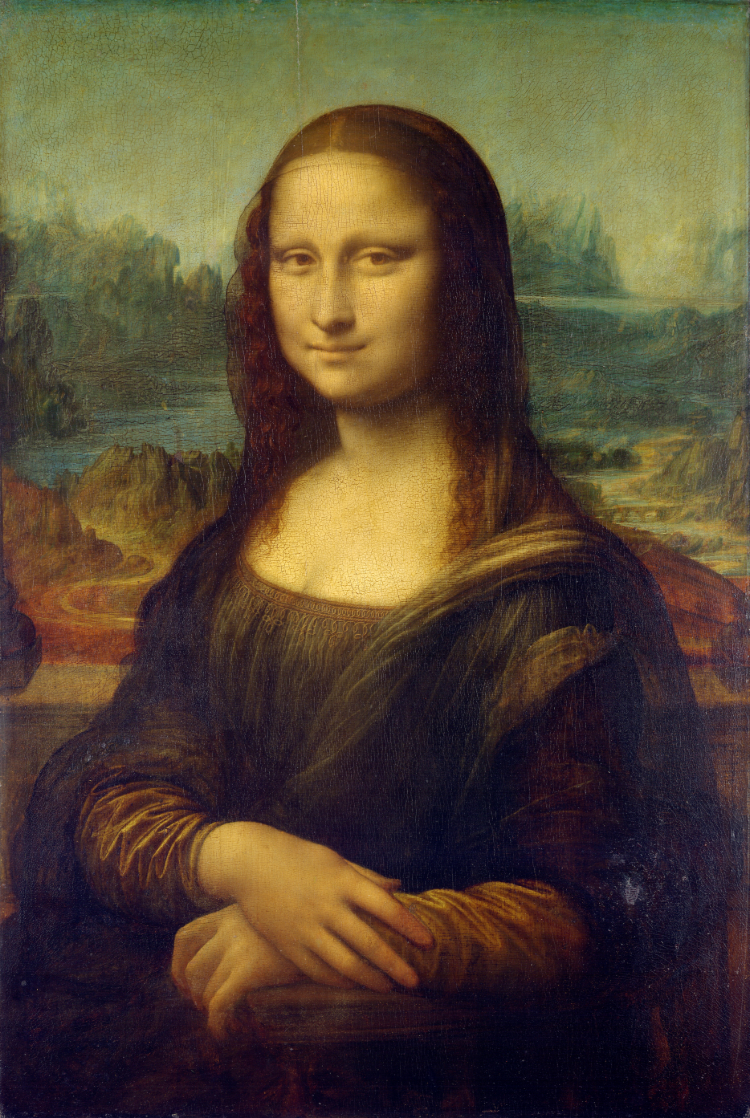The Mona Lisa by Leonardo da Vinci

♪ Mona Lisa ♪
Men have named you, but only because your original name is actually La Gioconda.
The Mona Lisa is, without question, the most famous painting in the world. This is objectively true, because if you've ever been to Louvre, you've rushed past innummerable priceless works of art to take a selfie with the picture among the sea of heads also taking selfies with the painting.
Despite the fact that the Mona Lisa is perceived as the Merlot of paintings, it's a brilliant work of art that encapsulates many of the major themes of the Renaissance (just not the puffy pants).
I can see her hands!
Though it was commonplace at the time in Northern European countries, a portrait in a 3/4 profile was unusual at the time in Italy. Portraits were typically in profile, showing the sexiest part of anyone's face - the outline of the nose - and cut off at the bust. Da Vinci took the opportunity to scandalously bare La Donna's hands, eventually leading to the downward spiral that is the fall of civilization today.
Sfumato
Meaning "smoked off" or "blurred" in Italian.
Da Vinci used this technique to subtly blend the background of the painting into its foreground and create a sense of depth. Prior to the Renaissance, there was no such technique to differentiate objects at different distances.
Sfumato keeps with the Renaissance tradition of mimicking reality. Here, Da Vinci combined it with a similar techniique of employing atmospheric perspective, in which objects at a distance become hazier and their color becomes more muted.
She's a triangle!
In addition to a focus on realism - Da Vinci spent his free time bumming around at the local morgues to better understand human anatomy - Renaissance artists were also obsessed with geometric proporations and symmetry. La Donna is a big ol' isosceles triangle (a fact called out over and over and over again for its mystic symbolism in The Da Vinci Code, that masterpiece of American literature).
